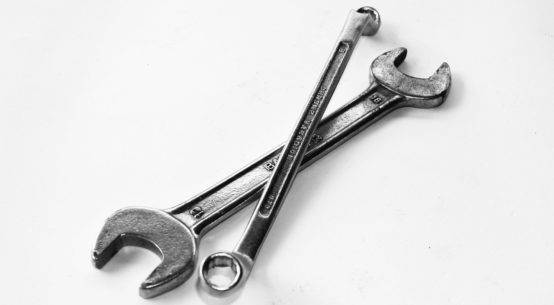
“Sure, I know how to ride” are the six most common words preceding a serious accident. You may know how to ride a bicycle, you may know how to ride a motorcycle, you may even know how to ride a unicycle, but you have to learn how to ride an ATV safely, just like anything else.
Taking just a few minutes to know and understand the machine that propels you across the landscape at 10 to 50 miles an hour may be the wisest thing you ever do. It is an even wiser use of a full day at the ATV training course nearest you.
First let me add a disclaimer here. The following is not intended to be a comprehensive ATV education course. It is simply intended to enlighten you on the things you can do on an ATV that will cause you injury or even death. Many people have died or been permanently disfigured or injured from riding ATVs. If you are an adult or a child you should take the ATV/OHV rider-training course offered by the State of Utah, or the ATV Safety Institute. It may be the only thing that saves your life someday. Seriously! The author assumes no responsibility for the completeness or accuracy of this information. Each person is responsible for their own actions. This information is provided as a means of demonstrating that information regarding safe use of ATVs is available and for no other purpose. To use an analogy, what I am offering here is a key. To get the car you have to take the full training course. In other words, there is much more to learn that I have offered here.
Okay, so you can ride an ATV. Any fool can plant their butt on the seat and hands on the handle bars and think they are prepared for a new adventure. Just don’t be one of them. Here are a few questions that may save your life. Do you know the correct answers?
What things should you check on a machine before you ever get on it?
To ride safely you must know that the machine you are riding is in good running order. Here are a few things to check:
- Tires: ATV tires should not be rock hard, like a bicycle tire. They work best when at 4-6 lbs pressure. They are intended to be a low pressure tire. On a rough surface this will make the ride smoother and the machine will actually be easier to control.
- Brakes. The travel on the brakes should be no more than one half the pull distance. ATVs come with a foot pedal brake for the rear only and left and right handlebar brakes for the front and rear brake. ATVs, without an automatic clutch, will have a handlebar front brake a and foot pedal back brake, in addition to the clutch.
- Does the ATV have two wheel drive or four wheel drive? Four wheel drive machines respond differently and more pronounced when turning than do two wheel drive vehicles.
- Is there enough fuel to complete the ride? It is not hard to run out of gas within a block of your start. If you are lucky your push back to the start will be on clean dry pavement. Otherwise the machine may need to be abandoned while you retrieve the needed fuel. It is not easy to push an ATV.
- Do you have all the necessities you will need for your ride? Planning ahead will be a key to your survival. Remember, you are not traveling through downtown Salt Lake City. There is not a 7-11 on every corner. If you don’t have it, you won’t get it any time soon.
What should you wear to ride an ATV?
- Helmet. Yes, everyone should be wearing a helmet. Okay, the law only requires those under 18 to wear one, but everyone should. The rules for our ATVs include, “no one rides without a helmet, ever”.
- Goggles. Sunglasses just don’t keep the dust out of your eyes. You really need to wear goggles.
- Long sleeve shirt. When riding through the trees it is impossible not to have a close encounter that could leave a nasty scratch. There are no fashion police on the trail. You can wear anything you want, just cover yourself appropriately.
- Long pants. The same wisdom applies to long pants as to long sleeve shirts.
- Boots. They don’t have to be serious calf length boots. You will be fine with a pair of good hiking boots that cover your ankle. Those who have the full calf length boots love them. Tennis or sport shoes are not recommended. The heat from the engine will literally melt the soles off them. Sandals offer no protection at all and should never be worn while riding an ATV.
How many people should ride the same ATV?
One. They are built for one person. It is possible to seat more than one on an ATV, but that doesn’t mean that they are a tandem machine. Unless the ATV is manufactured to seat two people, they should be operated by one person with no passengers.
What makes an ATV ride differently than a motorcycle?
- Four Wheels rather than two.
- Twice as many obstacles to avoid. Your path is three feet wide, not six inches.
- Rider Active turning. You don’t have to turn the handle bar to change direction, just shift your weight. (a primary reason why two riders on an ATV is dangerous)
- Low pressure tires. These offer forgiveness in rough terrain, they also permit the change of direction without turning the handle bar. The rough tread also make it unsafe and unwise to ride at ATV on a hard surface, such as a road.
What are three common ways of injuring yourself on an ATV?
- Driving at speeds beyond your ability to control the ATV. You must keep in mind that the terrain below you changes in a heartbeat. You must be constantly observant of the path ahead of you and anticipate your selected course through many obstacles. You must anticipate oncoming traffic as well as obstacles. Even though you are well away from civilization, you must consider the possibility that someone is approaching the same blind corner from the opposite direction. Caution will save your life, recklessness will take it.
- Attempting to climb a hill too steep for your ability. You will find no chart that tells you how steep a hill you can climb. The variables are the condition of the trail the power of your machine, and your ability to find the most appropriate route up the hill. Standing and leaning forward will greatly enhance your ability to climb steep hills on your ATV but you will not be assured that you will not flip over backwards. Don’t consider going down a hill that looks too steep to make the return trip up the same route. Murphy will prevail and you will be climbing the hill.
- Putting your foot down to stabilize. If you are familiar with riding bicycles and motorcycles your first tendency will be to put your foot down to stabilize yourself. It is the source of serious injury including a broken leg if not serious lacerations. You are far better off shifting your weight and let the four wheels do the stabilizing.
How do you start the machine?
It sounds all too simple, until you realize that you are miles away from camp and your machine just stalled out. Even brand new machines will stall. Most machines require that you start them in NEUTRAL. Make sure that you know how to get your machine in neutral. Most ATV’s have a neutral indicator light. Most ATV’s also have a kill switch. It is very easy to inadvertently turn off your machine and not know how you did it. You can grind the starter until the battery runs down, but until the kill switch is in the run position, you will not start your machine. I met a person on the trail not long ago who was in complete frustration because the ATV would not start. We had them on the trail in no time once the machine was in neutral and the kill switch was not engaged.
Where is the choke, clutch, lights, and kill switch?
- It is easy to get separated from your group and then what do you do if the machine dies. Take the time to know how to start the ATV using the choke. It will be located in most cases near the carburetor. If you wouldn’t recognize a carburetor from a transmission, be sure to ask where each of these things are so that you won’t be waiting for someone to come find you.
- Not all ATVs have a clutch. Some have automatic clutches. You must understand each machine you ride.
- Know which pedal or lever controls what set of brakes.
- You may start your ride at noon and the thought of knowing how to turn on the lights may be the farthest thing from your mind and your plans. I wish that all plans worked according to the plan. The truth is that most plans to not work out. Your ride back to your car may be at night and in pouring rain. Be prepared for it and you will enjoy the adventure.
- The kill switch can save your life if for some reason the accelerator becomes stuck.
What is the best riding position to use when climbing hills?
When are you going too fast?
Many forests and OHV areas have speed limits. Unlike a freeway or highway. You need not attempt to maintain that speed limit. Most ATVs do not have a speedometer. How then do you know if you are going too fast? Appropriate speed is a matter of personal judgement. Good judgement will permit you to ride safely and enjoyably. Poor judgement will place you constantly at or beyond the edge of your ability to control the machine. If you are traveling in a group and you find that you are uncomfortable with the pace, do not try to keep up with the group. Go only at the pace you are comfortable and safe at. Others may be able to take corners at high rates of speed safely. You may not have the same ability due to the laws of physics. A heavier object will have more forward inertia than its lighter counterpart. The tendency to maintain a continuous straight course of travel is more difficult due to that law of physics. It is better for you to lag behind and be safe, than to remain at the edge of the pack in your group. When traveling in groups keep this in mind and place the heavier or slower riders at the lead of the pack and everyone will have a good time and stay together.
Do you use the same riding strategies under all conditions?
- If caution is your strategy the answer is yes. If speed is your strategy, the answer is no. There are many variables to consider: The terrain, the weather conditions,the slope, the power of the ATV, the hour of the day, the physical health of the members of the riding party, and the amount of fuel.
- The actual ride is a solitary activity. Stop frequently to establish your route on your map of the locality where you are riding, Drink water often so that your judgement does not become clouded by heat exhaustion and dehydration. Share the enjoyment of the ride with your companions. Communicate frequently to make sure that everyone is on the same status for the ride.
Does the existence of a trail indicate that it is permissible to ride the trail?
When is it appropriate to ride cross country and leave the trail?
- Cross country travel off a beaten trail is rarely permitted. There are some designated areas where cross country travel is okay. These are usually sand dune areas. These areas should be used with extreme caution because a rider can never tell from what direction they will be approached, at a high speed, by another rider. These areas will require that a warning flag or whip flag be attached to the ATV.
- Staying on the trail is one of the single most important thing that ATV riders can do to preserve the opportunity to traverse public lands. Each time a thoughtless individual cuts out across an unmarked area, new fuel is added to the natural archivists argument that motor vehicles should be banned from public lands. Just don’t do it.
When riding with a group you should just speed up when you get behind?
What are the penalties for breaking the rules?
- Death, physical injury, disability for life, loss of a limb, permanent disfiguration, loss of all future plans.
- Fines from the Forest Service or BLM. Riding an ATV in an unauthorized area can result in the impoundment of the ATV and a fine of $5000.
- You may be found responsible for the cost of restoration of property to its previous natural habitat even if you were not the only person to create damage.
- If you or your machine start a fire you may also be responsible for the full cost to put out the fire. (This is a great reason not to mess with your forest service approved spark arrestor on the exhaust manifold.)
- Riding on Private Property without permission can result in arrest and conviction for criminal trespass. Some legal jurisdictions do not punish property owners for protection of their property with weapons such as paint ball guns, BB guns, stun guns or incapacitating gases.
- The cost to repair your ATV will not be cheap.
Well there it is. If you think you received a perfect score, congratulate yourself, but remember that we are all human and you will likely make a mistake over the life of owning your ATV. Hopefully yours will not be so serious that you can’t recover without injury, property damage or death.




